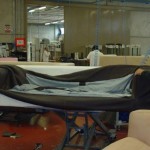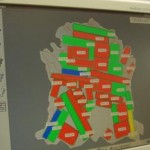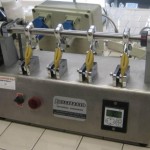Have you ever thought about how much time and effort it takes to produce the chair and sofa you sit on, or the bed you sleep on?
I can certainly relate to the chapters we studied relating to product design, and quality management and international standards. Working for a furniture company, I get to watch training videos of how our products are produced. I must admit furniture design is very intense. Every chair, bed, and table has to be designed according to the ergonomics of the human body, as well as international standards; since our furniture is sold worldwide. Every piece is designed to assure comfort, convenience and style. Along with product design, the main focus has now become on “ecodesign”, the following is the statement our company shares regarding sustainability: “Like any industrial product, furniture is a source of environmental impact. Thereby participating in its degradation to the extent that it requires materials and energy, it must be transported and packaged, it can be maintained and repaired, and it will one day become a waste… This policy is now inseparable to our commitments of quality and creativity.” This statement clearly shows our company’s use of Life Cycle Assessment (LCA).
Our furniture pieces are designed by top European designers, creators and architects. Every piece of furniture produced goes through a very long production cycle. Furniture design begins with creativity, followed by design with the use of software such as Computer-aided design (CAD), and Design for manufacture and assembly (DFMA). Once the design is completed digitally, a prototype is then produced with the use of human labor as well as Computer-aided manufacturing (CAM). The prototype is then tested by the designer and management.
Quality management is of crucial importance when it comes to the furniture we sell. To assure quality our furniture is only made with solid wood from environmentally sustainable forests, and the fabrics and leathers used in our furniture go through a series of detailed tests. Our fabrics go through a rub test, known as Martindale Test, which tests a fabric’s durability by counting the number of rubs it takes for a fabric to wear out. If a fabric wears out before 30,000 rubs then it is not durable, the most durable are fabrics from 30,000 to 100,000 rubs. Our leathers also go through a series of different testing methods such as absorbency, burning and stretching. A thorough inspection of the materials used is done by experts who “have the eye” to spot mistakes or natural defects. Some natural defects are usually found in leather. Since it comes from cows, some cows might get scars which are then found in the leather. A piece of furniture will only go into production, once it meets the European Furniture Standards and passes quality control.
Now that you have a better understanding about the creation of sustainable furniture, can you relate the importance of product design and quality management to other daily life objects?


